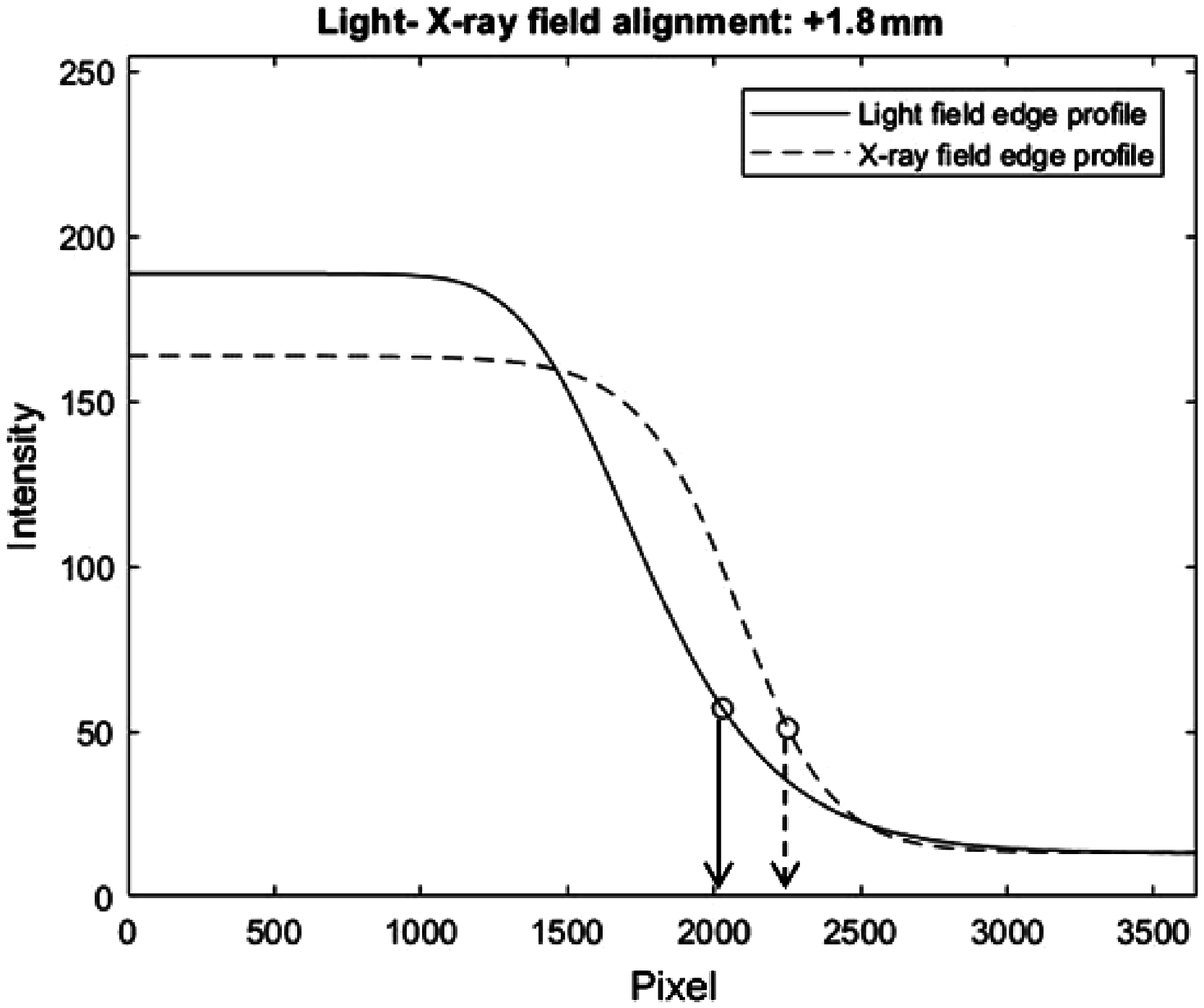Development and assessment of a quality assurance device for radiation field-light field congruence testing in diagnostic radiology
- PMID: 33244481
- PMCID: PMC7678877
- DOI: 10.1117/1.JMI.7.6.063501
Development and assessment of a quality assurance device for radiation field-light field congruence testing in diagnostic radiology
Abstract
Purpose: Existing methods for checking the light field-radiation field congruence on x-ray equipment either do not fully meet the conditions of various quality control standards regarding inherent uncertainty requirements or contain subjective steps, further increasing the uncertainty of the end result. The aim of this work was to develop a method to check the light field-radiation field congruence on all x-ray equipment. The result should have a low uncertainty which is accomplished by eliminating most subjective user steps in the method. A secondary aim was to maintain the same level of usability as of comparable methods but still able to store the result. Approach: A new device has been developed where the light field and corresponding radiation field are monitored through measurements of the field edge locations (in total: ). The maximum field size location deviation between light field and radiation field in the new method is constrained by the physical limitations of the sensors used in various versions of the prototype: linear image sensors (LISs) of 25 to 29 mm active sensor length. The LISs were sensitized to x-rays by applying a phosphor strip of covering the light sensor input area. Later prototypes of the completed LIS device also have the option of a Bluetooth (100-m range standard) connection, thus increasing the mobility. Results: The developed device has a special feature of localization a field edge without any prior, subjective, alignment procedure of the user, i.e., the signals produced were processed by software storing the associated field edge profiles, localizing the edges in them, and finally displaying the calculated deviation. The uncertainty in field edge location difference was estimated to be ( ). The calculated uncertainty is lower than for other, commercially available, methods for light field-radiation field congruence also presented in this work. Conclusions: A method to check the light field-radiation field congruence of x-ray systems was developed to improve the limitations found in existing methods, such as device detector resolution, subjective operator steps, or the lack of storing results for later analysis. The development work overcame several challenges including mathematically describing real-life edges of light and radiation fields, noise reduction of radiation edges, and mapping/quantification of the rarely observed phenomenon of focal spot wandering. The assessment of the method showed that the listed limitations were overcome, and the aims were accomplished. It is therefore believed that the device can improve the work in quality controls of x-ray systems.
Keywords: congruence; field edge; focal spot wandering; linear image sensor; quality control; radioluminescence.
© 2020 Society of Photo-Optical Instrumentation Engineers (SPIE).
Figures








References
-
- Forster E., Equipment for Diagnostic Radiography, MTP Press; (1985).
-
- Carlton R. R., McKenna Adler A., Principles of Radiographic Imaging: An Art and a Science, 5th ed., Delmar Cengage Learning; (2012).
-
- Fosbinder R. A., Orth D., Essentials of Radiologic Science, Williams & Wilkins, Lippincott: (2011).
-
- Lindström J., Karambatsakidou A., “Varying light field–radiation field congruence: PCXMC simulations for three clinical exam procedures,” Medical Physics Department, Karolinska University Hospital, jan.lindstrom@sll.se (2013).

